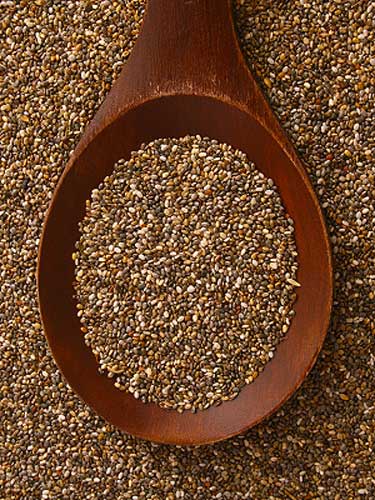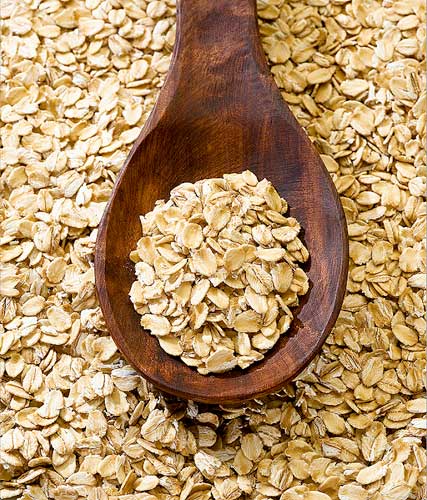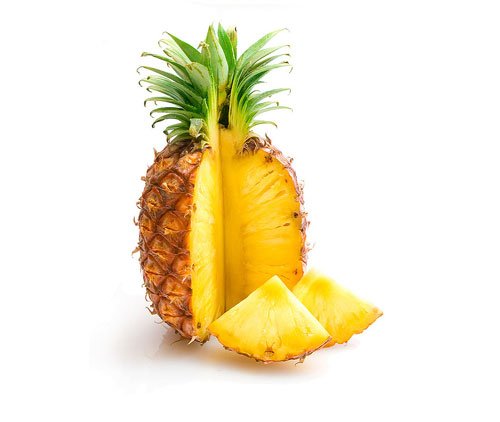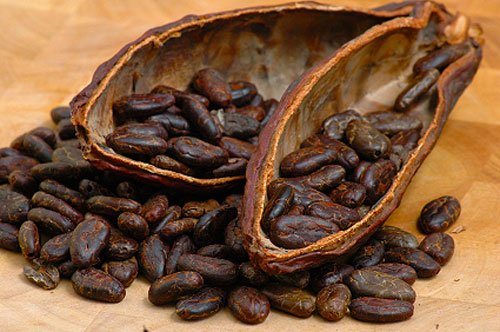by Maia Leggott
‘Eating for your yoga’ is a phrase we hear often these days, but many of us do not necessarily know how to put it into practice in a ‘normal’ diet. Here is a list of ten foods to enhance your yoga practice that focuses on things like fiber, protein and bone health and are relatively easy to incorporate into your eating routine.
Check ’em out!
Chia seeds
Most people associate this tiny superfood with the grassy pets that graced many a kitchen counter or desktop through the 90s. Little do they know chia is a powerhouse of fiber, omega-3 fatty acids, antioxidants, magnesium and more calcium than a glass of milk! In yoga body terms this means reduced inflammation of hardworking muscles, regulated bowel function, strong bones and a healthy heart. These tiny seeds make great additions to smoothies, salads or stir frys because you barely notice them. When wet they get a gelatinous, slimy texture that needs thorough blending but is great for pulling waste through the digestive tract. I like to make chia seed pudding, usually with some almond milk, banana and cinnamon – top it with your favorite nut and some antioxidant-rich berries and you’ve got a power breakfast!

Yogurt
This crowd favourite packs a powerful punch for your practice. Aside from the abundance of vitamins – including B12 for healthy red blood cells and nervous system – yogurt maintains proper digestion and promotes strong bones with its high calcium content. Yogurt protein also promotes water absorption and balances sodium in our bodies – an important part of staying hydrated in today’s sodium-craving culture. Eating yogurt within 60 minutes post-yoga provides essential amino acids for restoring our blissfully stretched-out muscles. Want even more bang for your spoonful? Try Greek yogurt (an incredibly high source of protein) topped with some nuts, fruit, chia seeds and honey – yum!

Avocado
This incredibly creamy, delicious fruit (yes, fruit) is possibly one of the most perfect foods you can eat. Rich in vitamins and minerals and full of healthy fats, avocados facilitate the absorption of nutrients in the other foods we eat. They keep your heart and brain functioning properly, promote blood circulation and regulate blood pressure, aid in digestion and prevent cancer, while also boosting anti-inflammatory and anti-aging qualities. Phew! Eating one before a yoga practice will help you feel satiated and keep your body functioning properly during all those downward dogs. The simplest way to enjoy is with a little olive oil, salt and pepper, but you can try guacamole, sauces for pasta or fish, blend it into a smoothie, toss it into a salad or add it to a sandwich instead of meat. Get creative! Avocados are delicious, nutritious and fun to experiment with!

Oats
Whole oats should be a staple of any yogi’s diet. They are packed with fiber and protein, as well as manganese which is essential in strong bone formation. Like avocados and chia seeds, the fiber in oats fills you up, keeping you satiated for longer and aiding in digestion by literally scraping the sides of your intestines, bringing food along with it and eliminating it. This staple can be added to any thing from cookies and breads (you can even grind it up to use as a gluten-free flour!) to fruit crisps and desserts. Oats are great to add to smoothies for extra protein, or you can keep it simple and have it with berries, nuts, seeds or honey – add some yogurt and you’re set!

Pineapple
A tasty treat that is the only natural source of an important ‘clean-up’ enzyme that digests dead protein cells resulting from injury or tears during the muscle-building process. This enzyme can also help relieve muscle soreness (perhaps our daily morning pineapple is the reason I haven’t been experiencing my usual post-intense-yoga-soreness…) This exotic addition to your diet is also a great source of vitamin C and manganese, promoting iron absorption and strong bones. Try pineapple in smoothies, with yogurt and granola, cooked into stir frys or just on its own as a post-class snack!

Bananas
The complex carbs in this smiley fruit are great for lasting energy, but their potassium also helps prevent muscle cramps by promoting proper contraction and relaxation. This is important for our yoga practice because our increased energy can sometimes push us a bit far and a quick banana gives us the boost we need to make it to final savasana. Toss one in your yoga bag or add it to your chia seed pudding, smoothies or a yogurt parfait.

Kale
One of my personal favourites, a serving of kale is a calcium goldmine, contains more iron than a similar-sized serving of red meat, and supplies an abundant amount of vitamin K. Kale is also packed with fiber, so will go a long way in regulating digestion, while the calcium promotes a strong spine and skeleton The best way to eat kale is fresh – try it in a smoothie or massaging it with a little olive oil and substituting it for lettuce in a salad (sometimes it’s nice to mix it with other greens like spinach and arugula to distribute the earthy taste). I like to add it to stir frys or warm quinoa salads, or just steam it to have with fried garlic and onions as a side dish – get creative with what’s in your fridge! A popular snack is baked kale chips; you can find just about any flavor recipe online these days.

Quinoa
Another favourite of mine, it is also one of the most protein-rich foods we can add to our diet; it is a complete protein, which means it contains all nine essential amino acids. Extremely high in fiber and iron, quinoa is great for our digestion and blood circulation. Other vitamins and minerals in quinoa are important for nervous system function, energy production and building strong bones. Quinoa is also gluten-free so it’s a great addition to your diet if you are intolerant of or allergic to gluten. Quinoa can be added to salads, cooked in stir frys or paired with steamed veggies. One of my favorite dinners is quinoa patties – mix with garlic, onion, herbs and other veggies, egg or Greek yogurt (in case you needed more protein), form into patties and pan fry in a little vegetable oil. Yum!

Almonds
Listing the myriad health benefits of almonds would take all day; in a nutshell (ha!), almonds promote bone health, immune system function, have anti-inflammatory properties, regulate blood pressure, enhance digestion, prevent cancer and boost energy. These are all important qualities we want for a healthy yoga food – strong bones, blood and bowels are vital to maintaining the energizing prana we try to cultivate in our practice. Almond milk is a fantastic substitute for dairy in smoothies, eggs or cereal and promotes heart health. The best way to eat them is raw and unsalted, so toss a baggie of almonds in your purse or yoga bag so you always have a handy snack; they’re also fantastic in salads, smoothies, topping off chia pudding or a cup of yogurt and fruit.

Cacao or Dark Chocolate
I had to include a treat on the list – because we all deserve a little! Cacao or dark chocolate is a great guilt-free choice to incorporate into your routine. It has to be reeal dark, though – ideally cacao nibs or powder, or look for a 60% or higher dark chocolate bar. Dark chocolate keeps blood sugar levels normal while increasing blood flow to the brain. A little nibble before class will boost energy and concentration because it contains the neurotransmitter responsible for releasing endorphins. It also contains a little natural caffeine, enough to give you a little boost without adding jitters to the mix. Even try tossing it in a smoothie or using cacao powder to make a delicious chocolate almond milk.

Mmmmm… I’m hungry …






